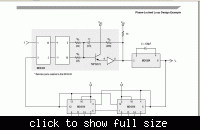LEARNING2
Newbie level 4

Hi everyone
I need to design FM MODULATOR BY USING PLL but without using any IC or Chip.
I need to build the circuit and examine it on the oscilloscope only.
thank you in advance for any help..
I need to design FM MODULATOR BY USING PLL but without using any IC or Chip.
I need to build the circuit and examine it on the oscilloscope only.
thank you in advance for any help..
Last edited:






